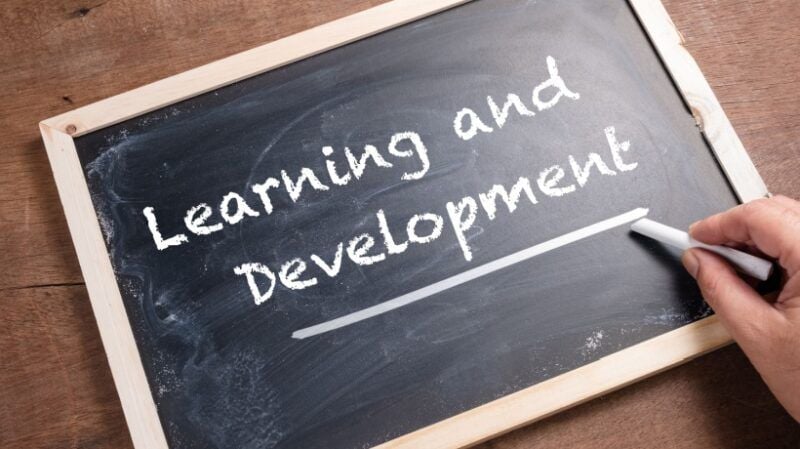
The New Era Of L&D: The Heart Hasn’t Changed
Allow me share something I have actually been seeing up close: Understanding and Advancement (L&D) isn’t just progressing, it’s changing at a speed a lot of us haven’t experienced before. Think of it. 5 years back, we were talking about on-line understanding as a support system. Today, it’s the foundation of exactly how organizations reskill, maintain, and equip their labor force. Functions are changing, abilities are frequently being redefined, and growth plans look nothing like the ones we built a years ago.
As an L&D expert, I often listen to leaders ask: “What are one of the most practical advancements I can try for my workforce? How do I even recognize what skills to focus on?” If you’ve been duke it outing these inquiries, you’re not alone. Let’s unbox what’s occurring and where you can focus your power.
1 From Job Responsibility To Skills: The Shift That Modifications Every Little Thing
We made use of to design learning around static job summaries. Today, job doesn’t fit neatly into those boxes any longer. Organizations are moving towards skills-first strategies. Why? Since skills are the true money of growth.
- Skill taxonomies and frameworks (like those constructed right into modern LMS platforms) are aiding services determine what’s missing out on today and what will be essential tomorrow.
- Inner talent markets are emerging, where workers are matched to jobs based upon abilities rather than job titles.
- For you as a leader, this implies reskilling isn’t a side job; it’s your best retention strategy.
2 AI Is Below, But It Requirements Guardrails
AI is no longer advanced; it’s already inside your LMS and discovering strategy, nudging students with customized recommendations. And when done right, it seems like magic.
- Personalized pathways
AI analyzes student habits and suggests programs straightened with job desires. - Time-saving automation
Admin tasks like registration, reporting, and comments loopholes are becoming easier. - Ability presence
AI-powered control panels give leaders quality on labor force preparedness.
However below’s my care: AI is only as strong as the data and governance behind it. Be curious, experiment, but also ask suppliers hard inquiries concerning openness, bias, and information security.
3 Skills-Based Knowing Fulfills Human-Centered Style
While technology can scale, human-centered style makes it stick. The advancements I’m most delighted around are the ones that mix technology with empathy:
- Microlearning and nudges
Tiny, just-in-time bursts of knowledge that regard students’ busy routines. - Discovering in the flow of job
Assimilations with MS Teams, Slack, or CRMs where workers currently spend their time. - Career-linked understanding
Development prepares that straight link abilities found out to promos or brand-new opportunities.
These aren’t just “nice-to-haves.” They’re coming to be expected.
4 Immersive Learning Is No Longer An Experiment
Virtual Reality (VIRTUAL REALITY) and Augmented Fact (AR) were when buzzwords. Today, they’re sensible devices, together with much-utilized simulations, scenario-based knowing, and gamification, especially for remote and worldwide groups.
- Imagine a frontline worker exercising safety and security protocols in VR, risk-free.
- Or a new supervisor stepping into a gamified simulation to exercise leadership discussions.
These immersive techniques raise retention and confidence, specifically in high-stakes functions. And the good news? Expenses are lowering, making them more possible for a broader variety of organizations.
5 Collaboration Is The New L&D Superpower
Below’s the fact: in the brand-new period, L&D can’t do well in a silo anymore. One of the most impactful programs I have actually seen were birthed from solid collaboration in between human resources, IT, and business leaders.
- HR offers the lens of ability and society.
- IT makes certain systems incorporate seamlessly.
- Magnate tie discovering to strategy and growth objectives.
When these voices collaborated, discovering becomes a company vehicle driver, not simply a human resources function.
If You’re Not sure Regarding Abilities Or Concerns, Beginning Below
Lots of leaders tell me, “I’m not also clear about which skills matter most.” That’s entirely reasonable. The landscape in this new age of L&D is loud. Here’s a straightforward technique I suggest:
- Listen to your organization technique
What’s altering in your market, item, or consumer assumptions? - Check out your workforce data :
Where are individuals leaving? Which groups are having a hard time? - Begin small with pilots
Pick one location, like digital fluency, leadership preparedness, or client experience, and run a concentrated program. Procedure, find out, scale.
Remember: you don’t need to do whatever at the same time. Also small, willful relocations can develop large surges in culture and efficiency.
Last Idea: The Heart Of L&D Hasn’t Transformed
Yes, the tools, roles, and approaches are moving dramatically. But at the heart of it, even the brand-new era of L&D is still regarding unlocking human capacity. As CLOs and L&D leaders, our job is to create environments where individuals feel capable, sustained, and influenced to grow. Whether through AI-driven customization, immersive simulations, or merely much better discussions in between managers and groups, the objective continues to be the very same: to aid individuals thrive to ensure that companies can thrive.
If you wonder concerning which advancements might work best for your workforce, begin checking out. Try something small, measure the impact, and don’t hesitate to repeat. Because in 2025, one of the most successful L&D leaders will not be the ones who did whatever, they’ll be the ones that moved with purpose.